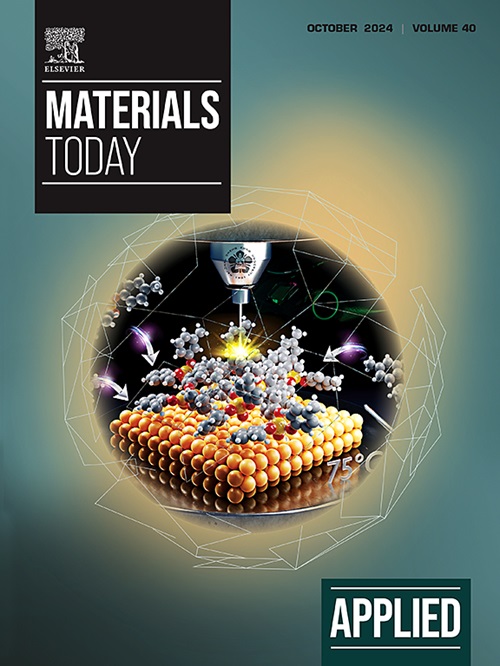利用 "无冷却系统 "改进滑弧等离子体合成异相催化剂的方法
IF 6.9
2区 材料科学
Q1 MATERIALS SCIENCE, MULTIDISCIPLINARY
引用次数: 0
摘要
Glidarc 等离子体(GP)条件温和,处理时间短,是制备异相催化剂的一种很有前途的方法。这种技术已被用于合成各种催化剂,如氧化铁和氧化锰。研究表明,在合成过程中添加后放电(PD)步骤可赋予催化剂宝贵的新特性,如相变、比表面积增大和催化活性增强。我们知道,放电步骤主要影响等离子体合成的固体成熟,如果在系统中引入热量,则可加速固体成熟,因此我们现在考虑通过等离子体自发提供的能量加热溶液来加速 GP 催化剂合成的可能性,而无需添加放电步骤。为了挑战这种方法,我们在不使用通常集成在 GP 设置中的冷却系统的情况下,将 FeSO 和 SnSO 前体置于等离子体中,并将得到的固体与通过涉及 PD 步骤的传统 GP 合成得到的固体进行了比较。研究结果表明,对于铁前驱体而言,不进行冷却会加速非催化活性相的形成,并导致颗粒团聚,这是不可取的。然而,对于锡前驱体来说,不使用冷却系统会带来进一步提高固体催化活性的特征。确切地说,在不影响固体质地特性的情况下,氧化锡相比其他催化活性较低的相发展得更好。这表明,在某些情况下,取消 PD 步骤可以简化 GP 催化剂的合成过程,并减少其对环境和经济的影响。本文章由计算机程序翻译,如有差异,请以英文原文为准。
Improving the synthesis of heterogeneous catalysts by gliding arc plasma using the “no-cooling system”
Glidarc plasma (GP) is a promising method for preparing heterogeneous catalysts due to its mild conditions and short processing time. This technique has been used to synthesize various catalysts like FeOx and MnOx. Adding a post-discharge (PD) step during synthesis has been shown to impart valuable new properties, such as phase transformation, increased specific surface area, and enhanced catalytic activity. Knowing that the PD step mostly impacts the plasma-synthesized solids maturation and can be accelerated if heat is introduced into the system, we now contemplate the possibility of accelerating the GP catalysts synthesis by allowing the solution to be heated by the energy spontaneously provided by the plasma without the necessity to add a PD. To challenge this approach, we subjected FeSO and SnSO precursors to plasma exposure without employing the cooling system usually integrated in the GP set-up and compared the resulting solids with those obtained via conventional GP synthesis involving a PD step. The findings show that for iron precursors, the absence of cooling accelerates the formation of non-catalytically active phases and causes particle agglomeration, which is undesirable. However, for tin precursors, the absence of a cooling system introduces features that further improve the catalytic activity of the solids. Precisely, tin oxide phases developed better than other less-catalytically active ones without affecting the textural properties of the solid. This suggests that in some cases, eliminating the PD step can simplify the GP catalyst synthesis process and reduce its environmental and economic impact.
求助全文
通过发布文献求助,成功后即可免费获取论文全文。
去求助
来源期刊

Applied Materials Today
Materials Science-General Materials Science
CiteScore
14.90
自引率
3.60%
发文量
393
审稿时长
26 days
期刊介绍:
Journal Name: Applied Materials Today
Focus:
Multi-disciplinary, rapid-publication journal
Focused on cutting-edge applications of novel materials
Overview:
New materials discoveries have led to exciting fundamental breakthroughs.
Materials research is now moving towards the translation of these scientific properties and principles.
 求助内容:
求助内容: 应助结果提醒方式:
应助结果提醒方式:


